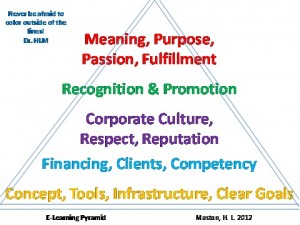Published on
All You Need Is Love! Really? (Part 3)

While keeping in line with the previous two sections of this series, I’m titling this “Part 3”. However, if I were to rename it I would immediately title this final installment, “Romance and The Fall: Toward Recovery”. Hindsight is always illuminating.
When I initially wrote “All You Need Is Love! Really?” I had no idea I would be writing a series of three articles with such a huge amount of feedback, re-tweets, LinkedIn shares, emails, public comments, dialogue exchange, and requests for more. I have had a very unique experience to make a topic I hold dear to my professional and personal existence come alive and develop in such a public manner. So, with that said, and a tear in my eye, onward!
As I’ve discussed in Parts 1 and 2, love ain’t pretty. It can be overwhelming, addictive, the answer to our prayers – but it can also be debilitating, blinding, toxic, and make us make bad decisions. While I’m not necessarily talking about the internet dating experience (or am I?) the chemical and emotional properties affect us the same regardless of the object of our desire. We go nuts.
So what happens when love goes bad? The moment your organization starts to realize something isn’t right in its love-fest with the new technology is the moment things get ugly. Each party involved starts to do the “Meer-Kat” from their cubicle and/or office. The stage is set and fingers are ready to point.
What happens next is straight out of our beloved Psychology 101 course (where we first met Maslow’s Hierarchy of Needs, 1943). It is called “The Five Stages of Grief” and must be handled with the utmost patience and care if this love-gone-bad relationship is to continue.
The five stages were first identified by Elisabeth Kubler-Ross in her 1969 book, On Death and Dying. This model “describes the five stages in which people cope and deal with grief and tragedy, especially when diagnosed with a terminal illness or experience a catastrophic loss”. (Wikipedia: Kubler-Ross Model).
While I am in no way suggesting that technology love results in the same scale of emotional fallout as death and dying, I am suggesting that – due to the heavily weighted importance organizations place on the love / technology relationship within their organization – the emotional fallout of this failed relationship can be (and often is) felt and reacted to as a catastrophic loss.
This is serious. Go take a quick break and come back when you’re ready. We’ll wait.
So what are the five stages of grief and what can we do to move through them?
1. Denial Initial response: It didn’t happen. We love this technology and it will save us. Action: While we may love this technology, we must revisit the e-Learning Pyramid and see where things started to go bad. Hindsight.
2. Anger Initial response: It’s “HIS” fault! It’s “HER” fault! It’s “YOUR” fault! It’s the “TECHNOLOGY’S” fault! Action: Breathe in. Breathe out. Repeat. This is where the intensity of the love emotions come back to bite one in the proverbial backside. Anger is often measured in direct proportion to the love expended. The goal here is to disengage from that love intensity and walk away from it so that you are, simultaneously, disengaging from the need to be angry and can move on to resolution.
3. Bargaining Initial response: If we do ‘this’, ‘that’ will happen. A lot of technology tweaking happens here. Many a departmental, office, and Board meeting is spent on this stage. It’s wasted time, energy, and resources to try to negotiate with the technology. It also, more often than not, leads straight back to stage 2, anger. Action: The healthy action to take here is to realize that technology is inanimate and is not out to get you or sabotage your organization – no matter how much it feels this way. (Please keep in mind, too, that your IT folks aren’t out to do you harm either – they’re generally a likable bunch.) Again, a re-analysis of the e-Learning Pyramid will guide you out of this loop and put you many steps closer to using the technology at the right time, for the right reasons, rather than attempting negotiations with a machine.
4. Depression Initial response: But I looooooooooooooooooooooooooooved it! We’ve all been there. No need to elaborate. But please, stay away from the cookies in your desk drawer – no good can come from that pack of sugary band aids. None. Action: Find the hope, Baby! A path toward hope is a plan – like the e-Learning Pyramid (See a theme here? I hope so! I’ve all but pointed a huge neon finger toward the Pyramid!) When you know where you need to re-visit, and you know where you’re going, life (interpersonally and organizationally) becomes less frightening. Less fear means more progress. More progress means bigger outcomes. It all becomes manageable.
5. Acceptance Initial response: Well this isn’t working. What happens here is another meeting… but this time the meeting is based on a universal realization by all parties involved that the status quo isn’t doing anything for anybody. What also happens here is the understanding (hopefully) that to continue to feed, support, and defend the current way things are environment will lead no one anywhere. Individual opinions and wants become transformed into group collaboration with a clear set of needs on the horizon. It’s time to stop reacting to the failure and time to start planning success! Action: Back to “The Plan”. I’ve made it simple for you. The plan you can use is the e-Learning Pyramid. It’s all there. Pull it up, lay it out, work with it and watch your organization thrive! Happily and with all components aligned to steadily support the actions and beliefs of technology implementation in the e-Learning environment.
As a refresher (and in case you missed the first two articles) here it is! The Plan!
But wait! That’s not all! (Insert cheesy TV voice here!)
We have identified the problem and taken concrete steps to wade through the mess of the love-gone-bad dynamic. That’s great! That’s worthy! That’s very good news! But it’s not over. Not by a long shot.
There is the issue, as there is in any relationship with a rocky history, the questions of healing and sustainability. Although I am a Doctor, I am not a Psychiatrist. Therefore, to keep it simple, I’m turning to our good friends at Wikipedia for a brief summary of the components of couple’s therapy and how the basic concepts can be applied here.
The basic principles for a counselor include:
- Provide a confidential dialogue, which normalizes feelings
- To enable each person to be heard and to hear themselves
- Provide a mirror with expertise to reflect the relationship’s difficulties and the potential and direction for change
- Empower the relationship to take control of its own destiny and make vital decisions
- Deliver relevant and appropriate information”. (Italics mine)
I propose that the above principles of the counselor fall into the category of the healing aspects of the tainted relationship. Each of these concepts involves the idea of listening to the needs of the other, of redefining expectations, and of giving power to the individuals to make the real and necessary trajectory adjustments so that the wounds of failure do not provide an excuse for the platform of sustainability that needs to be developed.
The following principles identified for the couple’s therapist are a bit different.
“As well as the above, the basic principles for a couple’s therapist also include:
- To identify the repetitive, negative interaction cycle as a pattern.
- To understand the source of reactive emotions that drive the pattern.
- To expand and re-organize key emotional responses in the relationship.
- To facilitate a shift in partners’ interaction to new patterns of interaction.
- To create new and positively bonding emotional events in the relationship
- To foster a secure attachment between partners.
- To help maintain a sense of intimacy”. (Italics mine)
Each of the above items identified as principles of the couple’s therapy by a therapist can be cross referenced to organizational therapy as well. Upon examination of the italicized points, it should become clear that these are indeed foundational, and sustainable, points and reference guides for an organizational rebuild after a fall. It’s do-able.
Of course, as with any situation where hearts, feelings, and ego become involved there will be resistance to the change…. Even if it was change that sparked the change that evolved back on itself and changed everything. Does that make sense? Didn’t think so – fear based arguments rarely do.
What to do?
Allow yourself, and your organization, to step out of the fear and onto a path of planned sustainability with a clear historical vision of where you’ve gone and where you’re going. The number one way of stepping into the light of progress is to step out of the past of darkness. It’s a habit to stay and it’s a choice to go. Let your organization run into the future with a plan and the future is yours!
You will LOVE it!
Peace and good choices!
This is the third article in Maston’s series, All You Need Is Love, Really?. Please click here for Part 1, and click here for Part 2.
Author Perspective: Business




